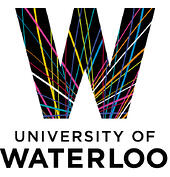 In August of last year, the journal of Microfluidics and Nanofluidics retracted a 2010 article entitled “Induced-Charge Electrokinetic Phenomena” by a University of Waterloo professor Dongqing Li and a PhD student, Yasaman Daghighi. The grounds for the retraction was plagiarism, specifically the misappropriation of text and data.
In August of last year, the journal of Microfluidics and Nanofluidics retracted a 2010 article entitled “Induced-Charge Electrokinetic Phenomena” by a University of Waterloo professor Dongqing Li and a PhD student, Yasaman Daghighi. The grounds for the retraction was plagiarism, specifically the misappropriation of text and data.
But while the retraction itself was fairly mundane, what was very unusual was that Dongqing Li was the founder of the journal and, at the time, was the highest editor on its board.
The plagiarism was discovered after MIT professor Martin Bazant noticed, as he was going through a journal, that his research was being used elsewhere but attributed to Li. This prompted him to bring the matter to the attention of the journal and to the University of Waterloo.
It was earlier this month that the University of Waterloo issued its verdict on Li. Having found that he did plagiarize, he has been suspended without pay from the university for a period of 4 months. The fate of the PhD student, Daghighi, is unknown and will not be revealed to the public due to privacy laws.
However, a more serious and long-term question has been raised regarding when and how it is acceptable for journal editors to publish their own research.
According to a poll on Retraction Watch, nearly 40% of respondents felt that it was never appropriate with another 50% thinking that it is only acceptable when there are clear rules and the editors have to abide by the recommendations of peer reviewers.
For journal editors, now is a great time to evaluate or draft their policies on self-publication to ensure that something akin to what happened with Li and his journal does not happen to elsewhere.
But perhaps the worst long-term challenge this plagiarism incident leaves, is the damage it’s done to both the University of Waterloo and to Canada’s international image.
For the University, this ethical problem could not have come at a worse time. The school is still recovering from a 2010 steroids scandal that resulted in its football team being suspended for one year. That controversy is still fresh in the minds of many Canadians and Li’s plagiarism and suspension only further harms the school’s integrity.
But the suspension also comes at a bad time for Canada itself. News of the suspension was almost lost amid news reports of another plagiarism scandal, this one involving the head of the Toronto District School Board, Chris Spence.
Spence was found to have plagiarized an op-ed piece in the Toronto Star, though it was additional allegations of plagiarism, including in his doctoral dissertation, that prompted him to resign leaving the nation’s largest school district without a director.
Canada is not a country well-known for plagiarism so the two stories, both of which have become items of international news, stand out. This has caused some commenters to wonder if educational and research standards in Canada have slipped or if there is a bigger problem that needs to be addressed.
Fortunately, the two stories seem to be isolated incidents that happened to fall together and not representative of a greater problem, at least not yet. The foundations of Canadian research and education still seem to be strong.
So long as the good researchers and educators in Canada continue producing great work, Canada, most likely, won’t suffer long from these cases.
The same, however, can’t be so easily said for the University of Waterloo, which takes a very public black eye and has to suspend one of its top researchers and grant-winners. The school, most likely, will need to either take serious action to promote academic integrity in its halls to repair its public image anytime soon.
In the end, that’s the greatest peril of plagiarism, not the damage it does to the plagiarist’s career, but the collateral damage it does to those who earned degrees and worked at institutions the plagiarist did and have had their reputations and careers hurt in the process.
Related
Related
Topics: Current Events,Academic